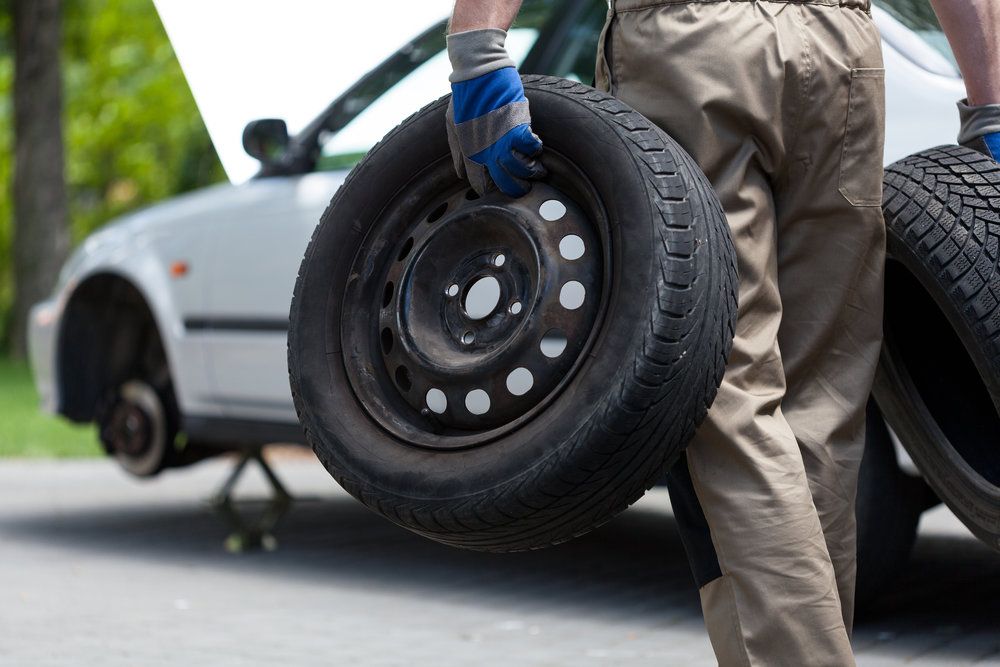Tire pressure has a significant influence on vehicle performance, durability and fuel economy. However, most people face the problem of air leaks that reduce wheel pressure.
One of the issues that people are very concerned about is brand new tire losing air pressure. Normally, the degree of escape is related to tire life. With new tires, it is quite rare unless it is experiencing some external impact.
Let’s explore the following article to understand better the causes and how to fix the pressure drop in new tires.
Why Is Tire Pressure Important?Tire PressureTire pressure is understood as the pressure of air compressed inside the tire. This one dramatically affects the operating characteristics of the new tire.
More specifically, inflating the new tires at the correct pressure helps the wheelchair roll on the road with the full tread. The contact surface is spread evenly, thereby helping to wear the surface evenly.
Besides, a set of properly inflated new tires also brings direct benefits to the user, such as optimal smoothness, stable cornering ability, shortest braking distance, and fuel economy.
Pressure is significant to the use of your car because it directly affects the performance, durability, and optimal function of the brakes and suspension systems equipped on the vehicle.
At the same time, maintaining the correct pressure helps you maintain safety, vehicle load, wheel life, and fuel consumption.
Therefore, you need to check your new tires regularly to ensure the pressure is always at the most stable level.
Why Does Your Brand New Tire Lose Air Pressure And Leak Air?Next, to better understand the condition of new tires leaking air, let’s learn about some of the causes of this condition.
Loss of air pressureThe first cause is the loss of air pressure. Here are some of the reasons.
Wheel problemAlthough very careful, when you just change a new tire, the risk of wheel failure can occur. The common problem is that your tire valve stem is of poor quality.
The common problem is that your tire valve stem is of poor quality.
When changing a new tire, it is better to replace the valve with a new one. Also, don’t forget to check it regularly to determine if it’s working correctly. Besides, if the valve core is too tight, it can also cause air to leak.
Another problem is that damaged, warped, deformed wheels due to impact also cause pressure to drop.
Tire damageDamageIn addition to the wheels, problems related to tires include rolling a nail or sharp object that punctures the new tire damaged, broken, and reduces the pressure quickly.
When moving on the road, you need to pay attention to the terrain. You accidentally go into potholes at high speed; it can also cause new tires to leak air.
Temperature changeMoreover, the change in weather is also the reason why the pressure of newly purchased tires decreases.
When it’s cold, the air contracts, and the pressure level drops faster.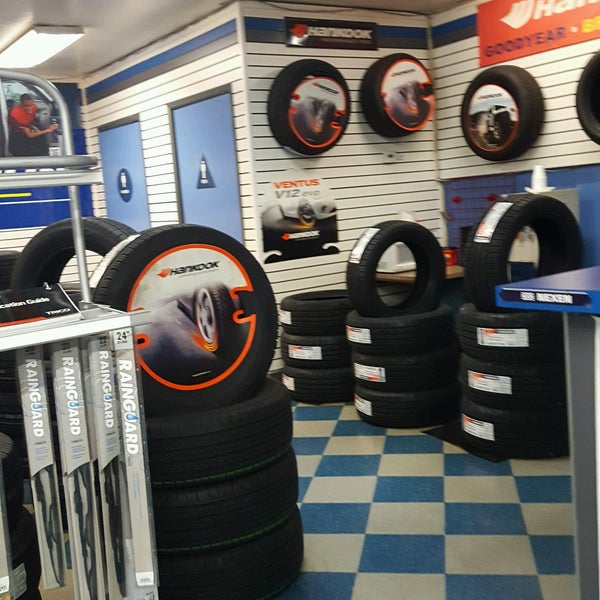 So, you need to regularly check your wheel in the winter to maintain it at the right level.
So, you need to regularly check your wheel in the winter to maintain it at the right level.
Gas leaks can also be the cause of brand new tires losing tension. Leaking gas causes a drop in tire tension, and this can happen slowly or very quickly.
Assembly problemIf there is a problem during the assembly process that causes the rims and tires not to fit properly, it will also cause air to leak faster.
Valve is brokenValve is brokenSimilarly, if you buy a new car but use an old valve or a new valve that comes with a damaged tire, it will also cause air to escape.
Usually, this speed is relatively slow. Therefore, it will be difficult to detect now but check the valve regularly to limit this situation.
Temperature change – VariationThe temperature change will also cause the air in the wheel to escape. The molecules are often more concentrated when it is cold, shrinking, reducing tension.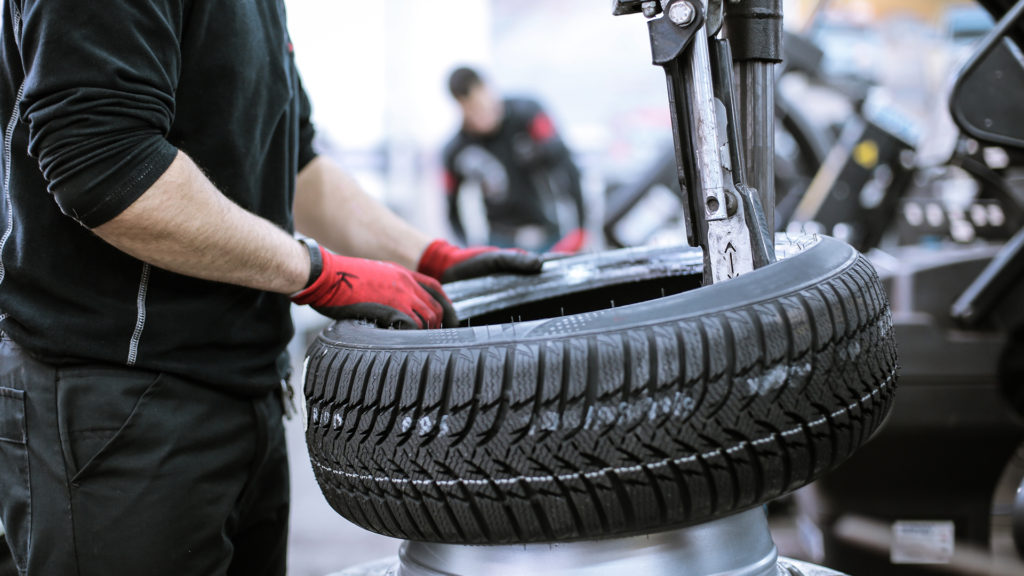 Statistically, every 10°F drop in temperature reduces stress by about one psi.
Statistically, every 10°F drop in temperature reduces stress by about one psi.
Finally, if you don’t seal the new tires properly, it can easily lead to leaks. Besides, not cleaning the seal not or adequately removing the label also causes the wheel not to fit together, and this creates a space for air in the new tire to escape.
Watch this video for useful ways on finding a leak:
Tips To Keep Tires Safe From Losing Or Leaking AirTips To Keep Tires SafeTo ensure safety during travel, it is essential to keep the tension stable. Some tips to help you maintain it at an appropriate level and limit losing or leaking:
Regular CheckFirst, the simple thing that you need to pay attention to is regularly checking your car’s tension. The problem of leaks reducing stress can happen slowly and silently.
The problem of leaks reducing stress can happen slowly and silently.
Therefore, try to maintain the habit of checking your tires weekly to determine the extent of tension leaks to detect and fix problems in time. At the same time, you need to check all the wheels and should not skip any.
Cold testWhen temperature drops, the air in the wheel can also contract, reducing the tension. Therefore, in the cold season, you need to check the tension with a higher frequency.
To determine the tension level accurately, you need to park the car in the shade and stop starting the engine at least 15 minutes before. Otherwise, the displayed tension level is incorrect and should remove about 2psi of inflation.
Use a standard tension gauge.Finally, it would help if you used a standard tension gauge to determine the exact tension level of the tire. Yet, you should also note that some meters may display a tension difference of about +/- 3psi depending on the vehicle type.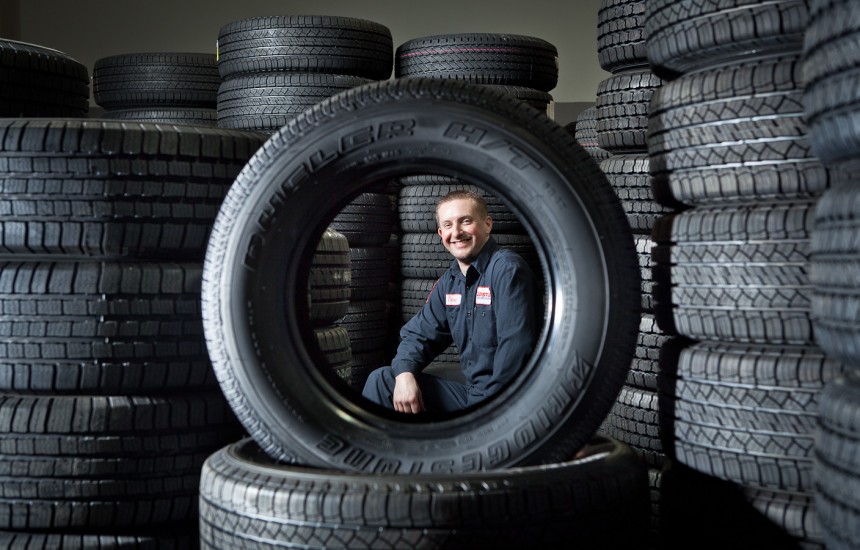
Therefore, a quality tool is an indispensable tool to help you determine this correct tension level.
ConclusionMany reasons lead to the situation of brand new tires losing tension. Therefore, you always need to pay attention to the issue of checking the stress of your tires, even you just bought them to ensure safe driving.
With the information we have provided, you can clearly understand the importance of car tension and how to fix the brand new tire leaking air.
Don’t you hate it when you start your car in the morning and your commute is delayed thanks to warning lights about a low tire? If this happens every few days, you might feel like pulling out your hair. To help keep your hair in place, I put together this guide.
First, find where the air leak is coming from. This can happen in the tire itself, between the wheel and tire, or at the valves or stems. If you’ve identified an air leak in the tire, you can repair it with a tire plug or a tire patch. A tire plug is done from the outside. Meanwhile, a tire patch requires the wheel to be separated from the tire to apply it from the inside and is usually more durable than a plug. If the wheel rim is bent, this could also cause the tire to go flat slowly. Allow wheels on a vehicle can be refurbished.
If you’ve identified an air leak in the tire, you can repair it with a tire plug or a tire patch. A tire plug is done from the outside. Meanwhile, a tire patch requires the wheel to be separated from the tire to apply it from the inside and is usually more durable than a plug. If the wheel rim is bent, this could also cause the tire to go flat slowly. Allow wheels on a vehicle can be refurbished.
I’ll explain how to fix a tire that keeps losing air every few days. I’ll go through some of the major culprits, complete troubleshooting steps, and repair guides for each example. My goal is to help you find out what the issue is and fix it as soon as possible.
Having the right pressure in all of your tires is critical. I always get surprised when a friend’s low-pressure alarm is going off and they simply shrug it off.
Why is pressure so important? Tire pressure determines things like how long it takes your car to stop, how quickly you can accelerate, how many miles per gallon your car gets, and your overall performance.
To put it simply, keeping your tire pressure at the recommended level is fast, and easy, and ensures your vehicle is operating at the most efficient level in terms of fuel economy.
The air will determine how inflated your tire is. Overinflation or underinflation will cause the tread of your tire to sit on the road incorrectly.
Another hint that pressure is important is the fact that manufacturers put a sensor in each tire. This checks the pressure and reports if the pressure is too low. If tire pressure didn’t matter, manufacturers wouldn’t waste money on these sensors.
When you find out that your tire pressure is low, your first instinct should be to fill them up. Sometimes, a single refill is enough to keep your tires full for a long time.
In this guide, I’ll be talking about tires that keep losing air, regardless of how many times they’re refilled. This is a clear indicator that something is wrong. The good news is that most of the solutions are pretty simple.
The idea behind air pressure is that it only works in a leak-proof environment. Tires are very specifically designed to be fully sealed, trapping the air. When you add new air, you’re not displacing the old stuff, you’re just increasing the pressure of the whole tire.
You’ll notice that a lot of the culprits and troubleshooting involve this idea of leak-proof tires. Even the smallest pinhole can cause your tire to lose air every few days, so keep that in mind as I move forward through this guide.
Why is your tire losing air in the first place? There are a few major reasons, but all of them revolve around the wheels themselves. This makes troubleshooting easier.
The following are a few major culprits along with the solution for each one.
The valve stem is the part that sticks out of your tires. This is the part that you attach the air pump to in order to refill your tires in the first place.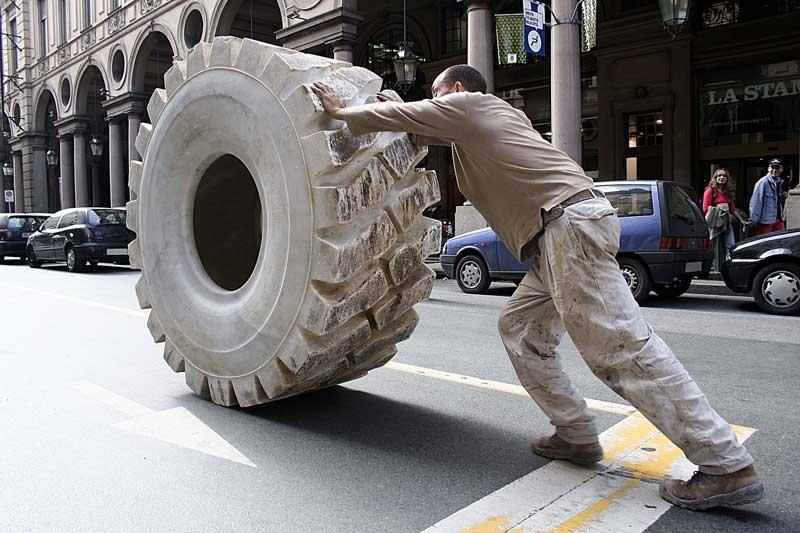
This valve is connected directly to the part of your tires that stores the air. As a result, the valve needs to be leak-proof and fully functional.
These are one-way check valves. There’s a little bit of engineering that goes into them. A spring will keep the valve sealed at all times unless you push enough air into it.
In other words, the valve should always be closed and sealed unless you’re filling up your tires. As you can probably guess, this isn’t always the case.
If the valve has rust, damage, or is worn out, then it won’t seal anymore. If the tire stem has a hole or damage to it, then the whole tire is no longer leak-proof.
In either case, you’ll be losing air.
Luckily, this problem is contained within the small area of your valve stems. If the valve itself is broken, you’ll hear hissing air if you lean close to the tire. This is the air escaping through the mechanism of the valve.
This should only be happening on one tire.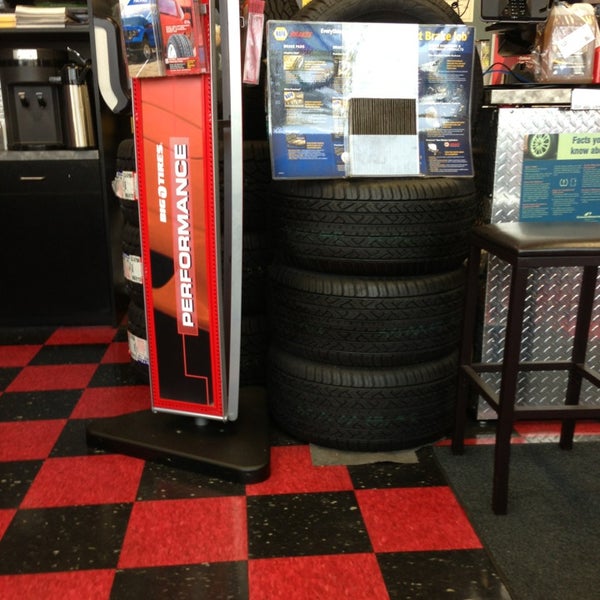 If it happens on tires on opposite sides of your car, you’re either very unlucky or it doesn’t have to do with your valves at all.
If it happens on tires on opposite sides of your car, you’re either very unlucky or it doesn’t have to do with your valves at all.
You’ll need to replace the valve. This is done much easier with the right equipment so having a shop replace it is recommended. To remove the valve stem, start by prying the tire off the rims.
That will expose the entirety of the valves. Use a pair of pliers to remove the valve completely and reach behind the rim to remove the base of the assembly.
Push the new assembly in and fill it up with some air to pop it into place. From there, seat the tire back onto the rim and you’re all done.
In my experience, the most common reason your tire keeps losing air is due to a puncture. This is a general term that means something made a hole in your tire. If the hole goes deep enough, then it will create a leak that allows air to escape.
Depending on the puncture, sometimes the screw or nail could still be on and not even noticeable especially if it punctured the tire in a hidden area.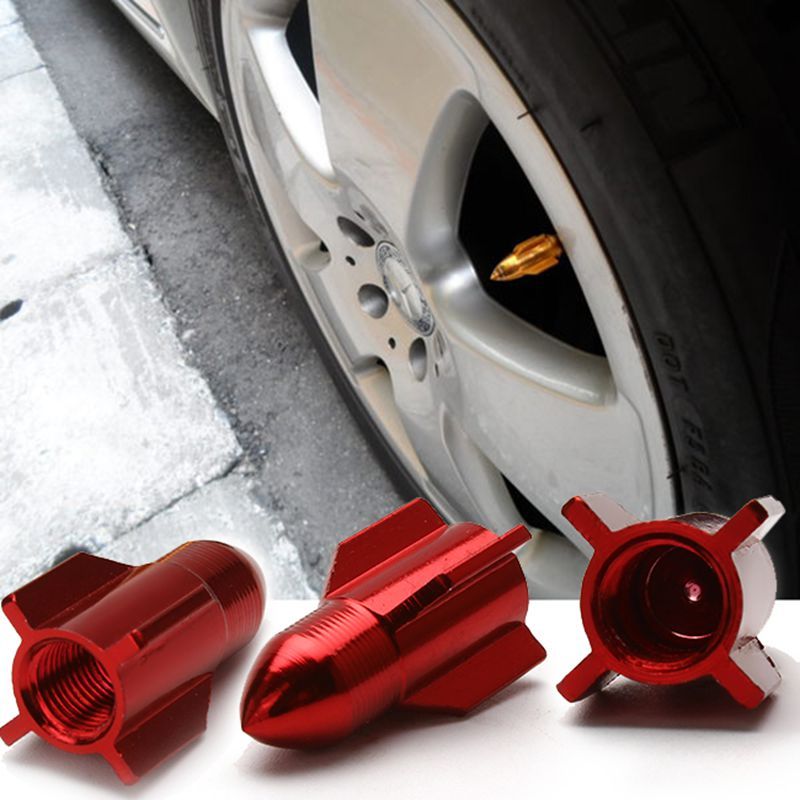 The air escaping could vary from minutes to weeks. Often times whatever punctures the tire doesn’t embed into the tire, simply punctures it.
The air escaping could vary from minutes to weeks. Often times whatever punctures the tire doesn’t embed into the tire, simply punctures it.
I had an instance where there was a nail in my tire, and I didn’t notice for months. Every week or so I would have to refill my tire. The air was barely escaping around the nail, meaning that the leak was really slow.
You might have something embedded in your tire, or it could just be a hole.
This is likely only going to happen on one tire. It’s uncommon that more than one tire gets a minor puncture at the same time, but it’s still worth checking.
To troubleshoot, grab an empty spray bottle. Fill it with water and a little bit of dish soap. Shake the bottle vigorously then take it over to your car. Spray this solution across the entirety of your tire.
Wherever air is escaping, there will be a lot of bubbling (thanks to the dish soap).
If it’s hard for you to see around your tire, you might need to jack up your car and remove the tire. It’s always easier without doing this since extra pressure will be on your tires thanks to your car’s weight. This added weight makes the air escape a little faster, making the puncture more noticeable.
It’s always easier without doing this since extra pressure will be on your tires thanks to your car’s weight. This added weight makes the air escape a little faster, making the puncture more noticeable.
Your two options are to either replace the tire or plug it. To plug the tire, there are a lot of factors you need to consider, so I highly suggest following my tire plugging guide.
To replace the tire, you’ll need to remove it and put on a new tire. Unless your tires are brand-new or have very little use on them, you can’t just replace one tire. I’ll talk about this idea later.
This option is less common, especially if your tire pressure drops consistently every few days. It’s still worth mentioning just in case you live in an area that has wild temperature swings on a daily or weekly basis.
In my guide about knowing if your tire is flat or just needs air, I discussed this concept in great detail. The short version is that cold air contracts and hot air expands.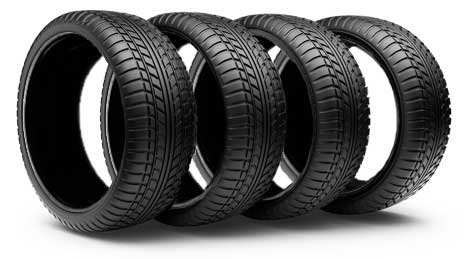
If your tire goes through a lot of transitions from hot to cold, your pressure will drop. In fact, it can get so low that your low-pressure sensor triggers a light on your dashboard.
The unique nature of this problem is that you won’t notice a hole, puncture, or any mechanical defects. Your pressure is low simply because of the chemistry of the air inside of your tire or tires.
This is the only culprit that should affect more than one tire at a time. Usually, all four of your tires will be low if the temperature is to blame.
The only troubleshooting you can do is rule out the other culprits and look at the temperature in the past few days. If this morning was especially cold as compared to the past few days, then your low pressure could be due to the weather.
The solution is to simply refill your tires with air until they’re all at the manufacturer’s suggested PSI. One of the many perks of parking in a garage is that these temperature swings won’t lower your tire pressure, so consider parking inside if you can.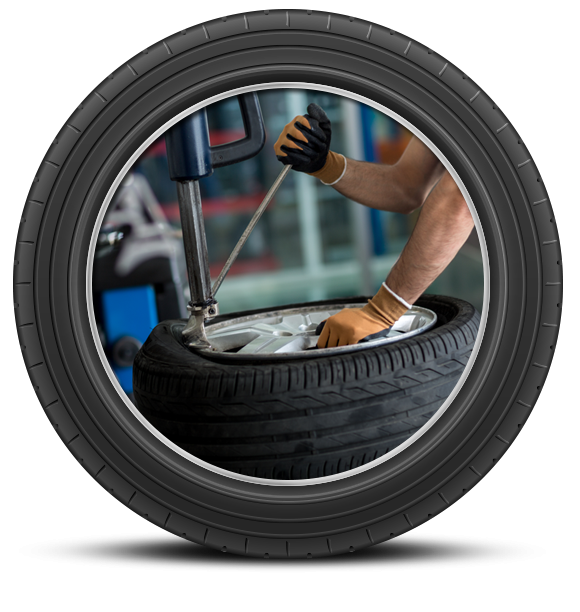
This problem is even more annoying if you’re dealing with a brand-new tire leaking. I’ve personally bought a tire in the past and then experienced a leak right after putting it on my car. I thought I did something wrong during the installation, but it turns out that the tire was just defective.
A defective tire has something mechanically wrong with it that allows air to leak out. It could be a hole, an incorrectly installed bead, or any number of incorrectly done manufacturing steps.
The bottom line is that the tire isn’t holding air the way it should be.
If you just installed a new tire and you’re losing pressure, there’s a chance it’s just a defective tire. If you haven’t driven anywhere, then the chance of this is even higher.
If you can’t find anything wrong with a new tire and you can guarantee it was correctly installed, then you should assume that it’s defective.
The best solution is to reach out to whoever sold you the tire and report it.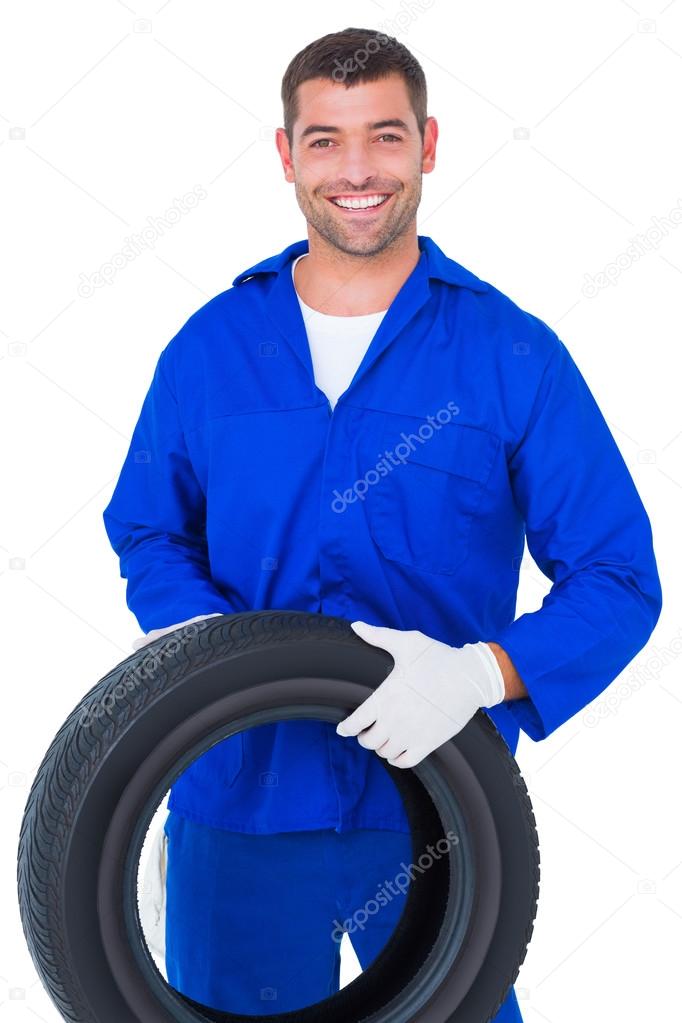 A lot of tire manufacturers have a certain grace period where they’ll replace a tire for free. Make sure you let them know as soon as you find out your tire is defective.
A lot of tire manufacturers have a certain grace period where they’ll replace a tire for free. Make sure you let them know as soon as you find out your tire is defective.
They might ask for some numbers found on your tire which will help them trace back the tire and find out the root of the problem.
The other part of the equation that I haven’t mentioned yet is the wheel. As a reminder, the wheel is the metal part that your tire sits on. You need the circumference of the wheel to be smooth and undamaged.
Of course, the tire itself is holding all of the pressure and keeping the air sealed. The wheel is the strong part of the assembly that keeps the tire together and in place.
If the wheel is bent, corroded, out of shape, or has cracks, problems can occur. Any of these mechanical issues will result in a wheel that isn’t perfectly circular. As your tires spin around, the misshaped wheel will add extra vibration and motion between the metal and rubber of the wheel assembly.
In this scenario, the metal will start eating into the rubber. In fact, it can cause the beads within your tires to fail, leading to leaking air.
To find a damaged wheel, you’ll want to pay attention to how your car feels while you’re driving. It might be more obvious at low or high speeds, depending on the type of damage you have.
At any rate, you’ll notice that one of your tires is especially shaky and wobbly as you’re driving. This is a hint that there might be damage. If this is the same side that you have the tire that needs air every few days, then there’s a good chance you found the culprit.
Alloy wheels are repairable if the wheel is not warped beyond repair. Repair costs can range between $100 to $300 per wheel. Often times it makes sense to refurbish your car wheels because after they repair the wheel, they refinish and paint it which gets rid of any curb rashes basically making it like-new.
If the price is too high or if you can’t find a local alloy wheel repair technician in your area, sometimes it makes sense to simply replace it with the same exact wheel.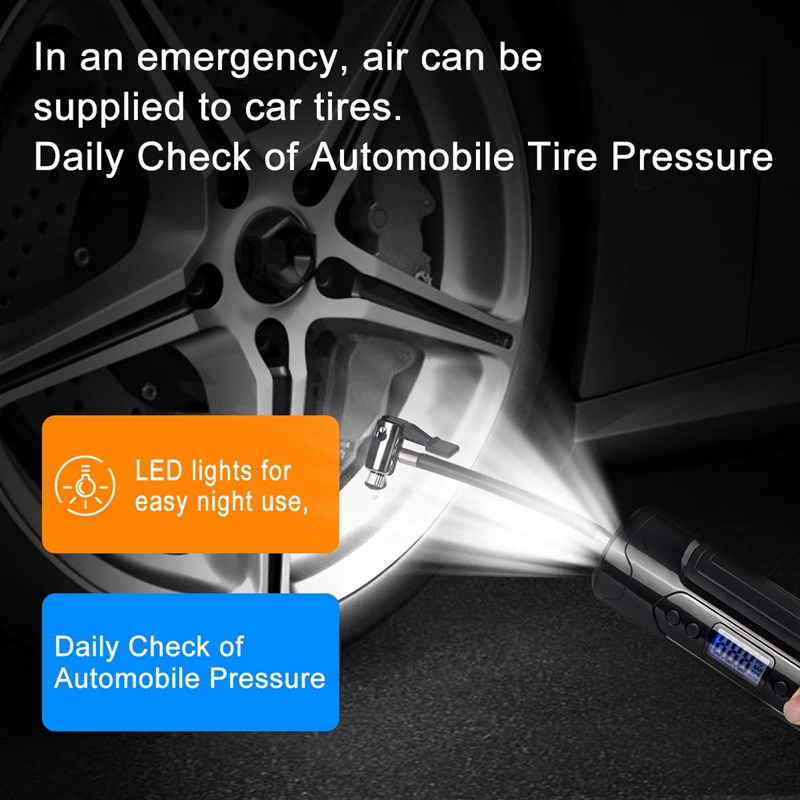 If it’s OEM, there are some websites dedicated to selling brand new OEM wheels. eBay is another great source.
If it’s OEM, there are some websites dedicated to selling brand new OEM wheels. eBay is another great source.
I also want to specifically talk about replacing your tires. A lot of the troubleshooting steps I just explained have to do with swapping out a tire for a new one.
You should never replace a single worn tire with a new one without replacing its partner. For FWD or RWD cars, you might be able to replace just one pair of tires — either the front or rear set, depending on which is the problem tire you’re replacing in the first place.
For AWD and 4WD vehicles, you’ll need to replace all four.
The reasoning boils down to the physics of driving. Your car’s tread will determine how your car performs, accelerates, decelerates, and turns. If one tire has way more grip than the other 3, your car will pull in that direction, and you could spin out if you speed up or slow down too fast.
Since FWD and RWD cars only power a single set of wheels, you can typically get away with just replacing one set at a time.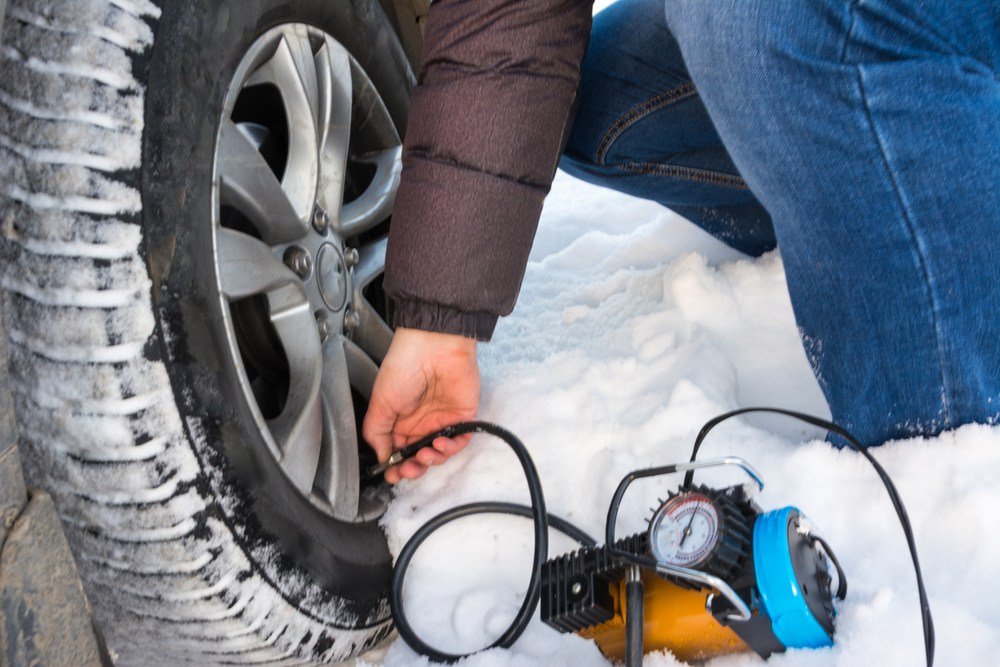 If you try the same in an AWD or 4WD, you’ll run into the same problem I was just mentioning.
If you try the same in an AWD or 4WD, you’ll run into the same problem I was just mentioning.
The only exception to this rule is if all of your tires are new. If they all have very little mileage and wear on them, you can replace a single tire without running into this problem.
This is why tire shops will always try to sell you tires in pairs. They’re not trying to scam you out of more money, they’re trying to keep you safe on the road.
Now you know how to fix that pesky tire that keeps demanding more air. If you ignore the low-pressure warning, you could run into a lot of performance and safety issues with your car, so make sure you fix it as soon as possible.
For more car troubleshooting guides, take a look at my blog. I also have some products that can come in handy for you, including a portable air compressor — check out the full list here.
Your subscription could not be saved.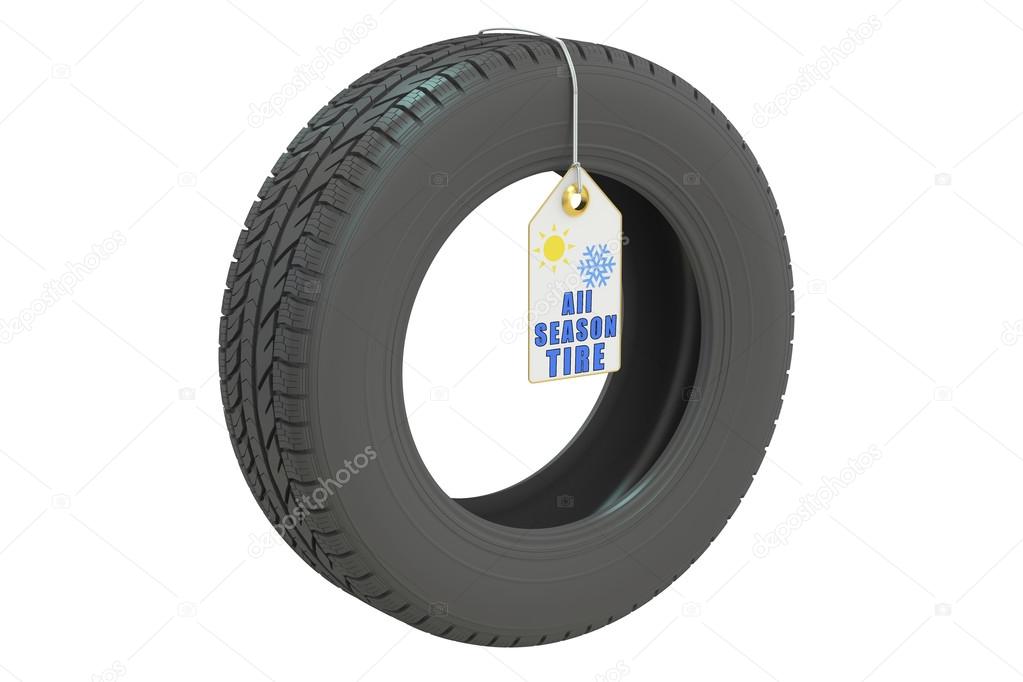 Please try again.
Please try again.
Welcome to Motor Hills!
Most of the cars are equipped with wheels without a tube, which maintain pressure in the tire during a puncture.
They guarantee safe driving even when flat, and with little damage they can hold their shape for several days. Despite their practicality, you should immediately look for the causes of wheel leaks. If you do not repair a punctured car tire in advance or do not fix warped alloy wheels, the operation of the car will lead to an emergency.
Since even tubeless tires flatten for no apparent reason, you need to carefully inspect the car and the condition of the wheels in order to detect a malfunction in advance. This will help to avoid a number of problems during the trip. Driving with flat tires adversely affects the performance of the machine. The vehicle has poor traction, the steering wheel pulls to the side with a bad tire, acceleration and braking are deteriorating. If the tires of the car are slowly deflated, this leads to increased fuel consumption.
Driving with flat tires adversely affects the performance of the machine. The vehicle has poor traction, the steering wheel pulls to the side with a bad tire, acceleration and braking are deteriorating. If the tires of the car are slowly deflated, this leads to increased fuel consumption.
To understand the problem, let's examine the reasons for which it releases air:
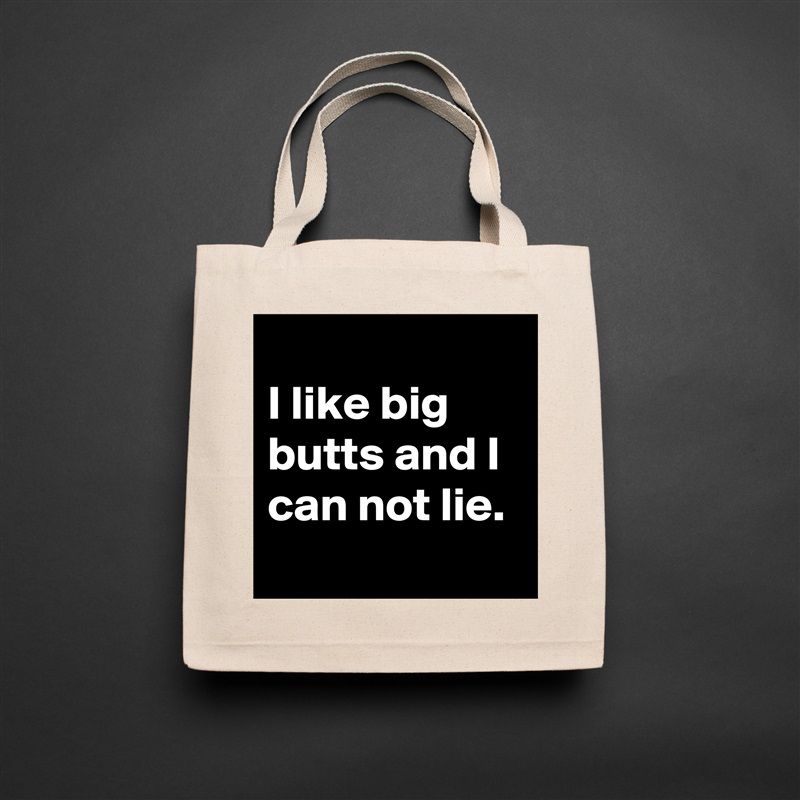 Unlike a puncture, it is less common. During operation, the sidewall is often damaged. Since this part is thinner than the tread, it is easily cut when hitting a bump. This can happen when the disc gets into a deep hole, in case of hitting a curb. With a small cut, the air is bled slowly, with a large gap, the wheel quickly loses its shape. In case of severe deformation, repair is often impossible.
Unlike a puncture, it is less common. During operation, the sidewall is often damaged. Since this part is thinner than the tread, it is easily cut when hitting a bump. This can happen when the disc gets into a deep hole, in case of hitting a curb. With a small cut, the air is bled slowly, with a large gap, the wheel quickly loses its shape. In case of severe deformation, repair is often impossible. 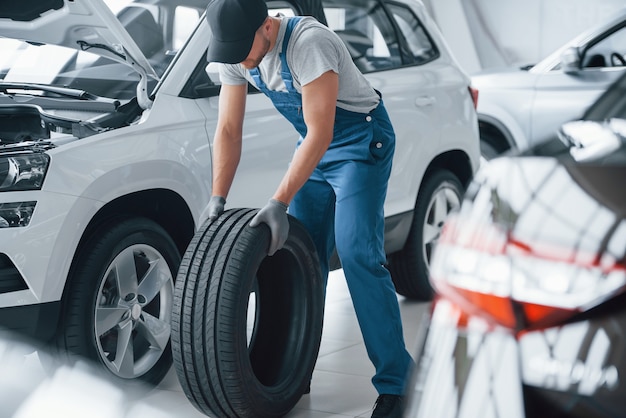 Since a faulty nipple deflates silently, only specialists will be able to detect the problem. During repair, you need to disassemble the wheel. This will provide the necessary access to glue the place where the nipple fits on the cast disk.
Since a faulty nipple deflates silently, only specialists will be able to detect the problem. During repair, you need to disassemble the wheel. This will provide the necessary access to glue the place where the nipple fits on the cast disk. It is often difficult to find the reason why the air in the wheel slowly bleeds. Even the masters can not always immediately detect a malfunction. You can find the problem yourself in the following way - pump over 1-2 atmosphere and listen to see if air comes out. If no sound is heard, then the wheel is wetted in a soapy solution and lowered into water. The area where air will begin to bubble will be the puncture site.
In cases where the wheel bleeds air on the car, but does not deflate when it is removed, it is necessary to disassemble and wipe the inside of the tire. In the presence of sharp objects, the fabric will catch on, indicating the puncture site.
Detect the causes of rubber puncture near the nipple, on the rim of the alloy wheel or in the tread using indirect causes: ;

If the tire on the car began to slowly deflate as a result of a side cut, then such a repair is not easy even for masters. Unlike a tread puncture, the area near the rim of an alloy wheel is softer and thinner. This does not allow you to put a patch or install a harness. Even after removing the cause, the damaged wheel will slowly bleed under load. Also, repairing a side puncture is dangerous because it affects the durability of the tire. Therefore, with a strong side cut, it is better to change the wheel to a new one.
In the event that a tread puncture is the cause of air bleeding, the tire can be easily repaired. It is important that in this case the rim of the cast disk is not damaged, and the hole size is no more than 4-5 mm. If a larger object hits, it will not be possible to repair the wheel on your own, so you need to sign up for a service station. If the tire on the car descends slowly, and the puncture diameter is several millimeters, a rubber band, glue and an awl will be needed for repair.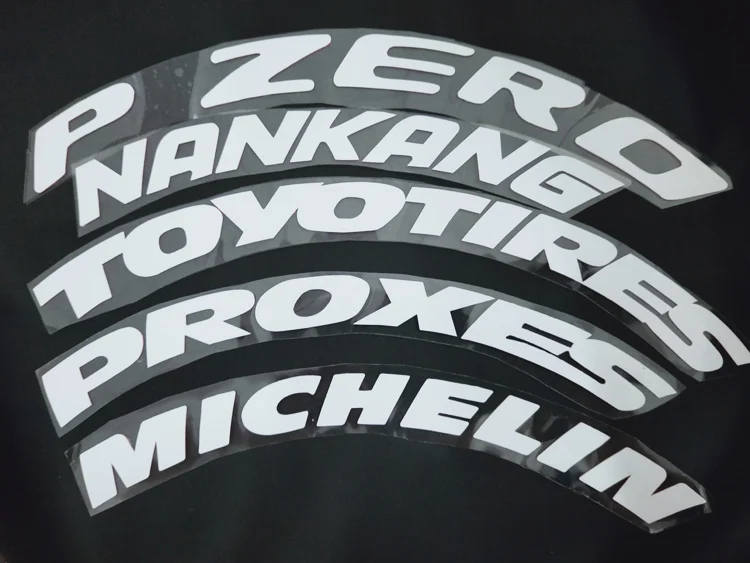
If the tire bead does not seal against the rim, the defect in the cast rim must be repaired first. There are many reasons why a dent appeared on the surface - due to falling into a hole at speed, upon contact with the curb. If you do not align the disk, the tire will slowly deflate, it may depressurize when driving a car. Dents are "rolled" in the service. You can fix the breakdown on your own on the road with the help of a heavy object - sometimes it is enough to hit the rim with a hammer to stop lowering. However, this is a temporary option.
If the rim is OK and the wheel continues to bleed, the problem may be in the spool. On the road, such a “puncture” can be corrected by pressing hard on the nipple. In case of deformation of the nipple, contact the specialists, as it needs to be changed.
Since the wheel itself may be the reason why the wheel began to deflate, let's look at the problem in more detail.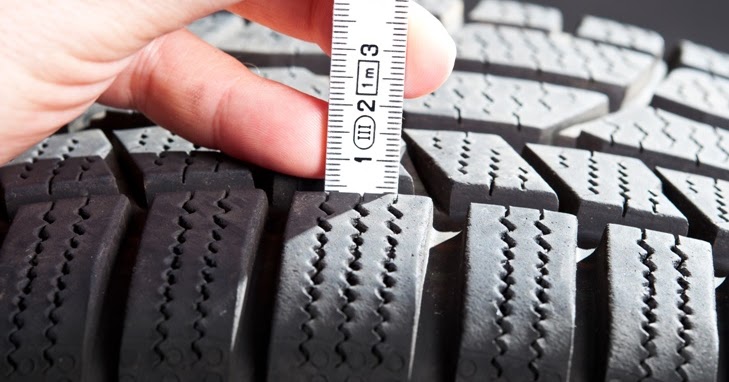 The rim is damaged when hitting a curb, due to old age or improper storage, which affects the tightness of its fit to the tire. Deformation of a cast wheel is also possible due to poor-quality alloy.
The rim is damaged when hitting a curb, due to old age or improper storage, which affects the tightness of its fit to the tire. Deformation of a cast wheel is also possible due to poor-quality alloy.
In case of advanced corrosion or mechanical damage to the rim, the disc is repaired or replaced with a new one. It is forbidden to pour sealant inside. It won't fix the rim problem, but it will definitely ruin the tire.
Summer Drive Protection Sound Comfort
Rating:
4.5
Tires Goodyear Eagle F1 Asymmetric 3 SUV
Summer Drive protection
Rating:
4.5
Tires Goodyear Eagle Sport TZ
Summer Drive protection
Rating:
4.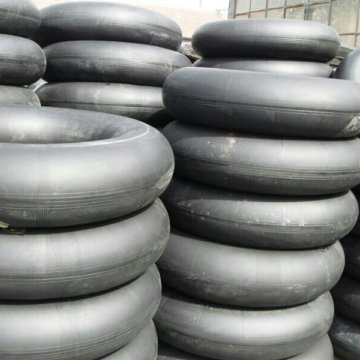 5
5
Tires Goodyear EfficientGrip 2 SUV
Summer Drive Protection Run On Flat
Rating:
4.5
Tires Goodyear EfficientGrip Performance
Winter Drive protection
Tires Goodyear UltraGrip Arctic 2 SUV
Winter Drive Protection Sound Comfort
Rating:
4.5
Tires Goodyear UltraGrip Ice 2
Winter Drive Protection Sound Comfort
Rating:
4.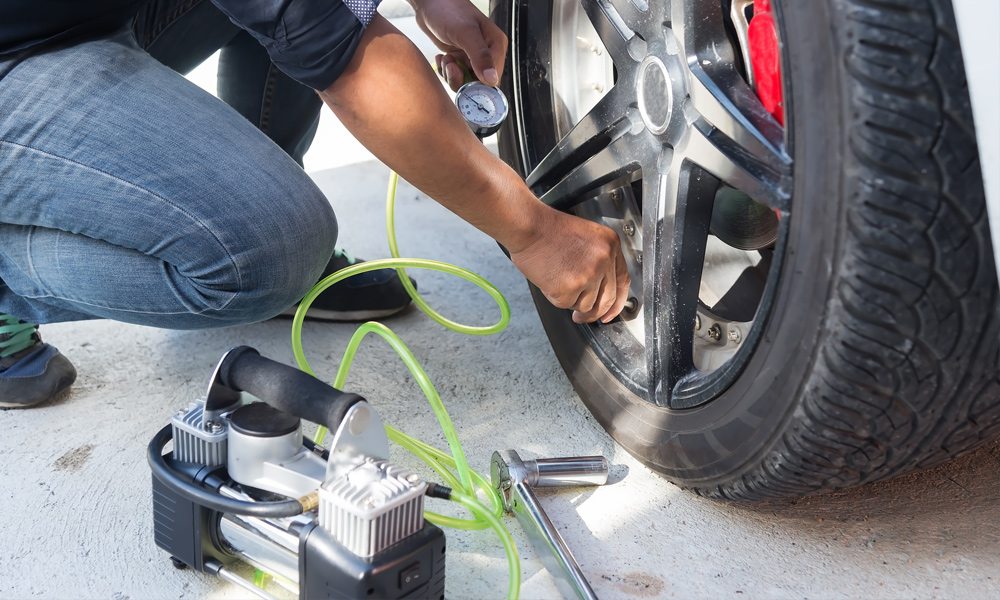 5
5
Tires Goodyear UltraGrip Ice SUV
Winter Drive protection
Tires Goodyear UltraGrip Performance+ SUV
All season Drive protection
Rating:
5
Tires Goodyear Vector 4Seasons Gen-3 SUV
Summer Drive Protection Run On Flat
Rating:
4
Tires Goodyear Wrangler HP All Weather
All season Drive protection
Rating:
4. 5
5
Tires Goodyear Vector 4Seasons
Summer
Rating:
4.5
Tires Goodyear Wrangler All-Terrain Adventure with Kevlar
Summer Drive protection
Rating:
4.5
Tires Goodyear EfficientGrip SUV
Summer Drive Protection Run On Flat
Rating:
4
Tires Goodyear Eagle F1 Asymmetric SUV
There are many reasons why a tire deflates. First of all, punctures occur due to foreign objects that are found on the roads - screws, metal fragments, glass and other debris. Breakage can occur due to a rim that has fallen into a hole, which cracks and begins to bleed air. Tires can also be damaged due to a malfunctioning suspension of the car, which increases the load on the rubber.
First of all, punctures occur due to foreign objects that are found on the roads - screws, metal fragments, glass and other debris. Breakage can occur due to a rim that has fallen into a hole, which cracks and begins to bleed air. Tires can also be damaged due to a malfunctioning suspension of the car, which increases the load on the rubber.
Having studied the reasons why flat tires, let's summarize. In order not to create an emergency during the trip, you need to check the discs for wear, measure the pressure regularly. If you find a defect, contact a specialist. For repairs in extreme conditions, we recommend having a set of harnesses, keys and a jack in the trunk, it is worth putting a full-fledged spare tire.
Sometimes a tire goes flat for no apparent reason. Why does a tire constantly leak air if it is not punctured or damaged? Even tubeless tires can deflate, and it takes time to figure out the cause of the problem.
Running with flat tires results in increased fuel consumption, tire wear and poor vehicle handling.
Let's look at the main reasons why a flat tire can occur.
If a tire puncture occurs on the road, you must pull off the road and stop on the side of the road, leaving room to work on the wheel. The most obvious option if a flat tire is to put in a spare, but what if you don't have one? In this case, you need to try to pump up the wheel and evaluate the problem. You may be able to drive to the nearest auto repair shop.
The easiest way to find a puncture is to pour water on the tire. Characteristic air bubbles will appear at the puncture site. At the same time, it will become clear what caused the puncture. But you can’t immediately get the discovered object, because it closes the hole and does not allow air to escape quickly.
If, on the contrary, there is no foreign object at the puncture site, you can screw a self-tapping screw into it, inflate the tire and try to drive to the nearest tire fitting station.
If you have a tire repair kit with you, you can have your tire repaired on site.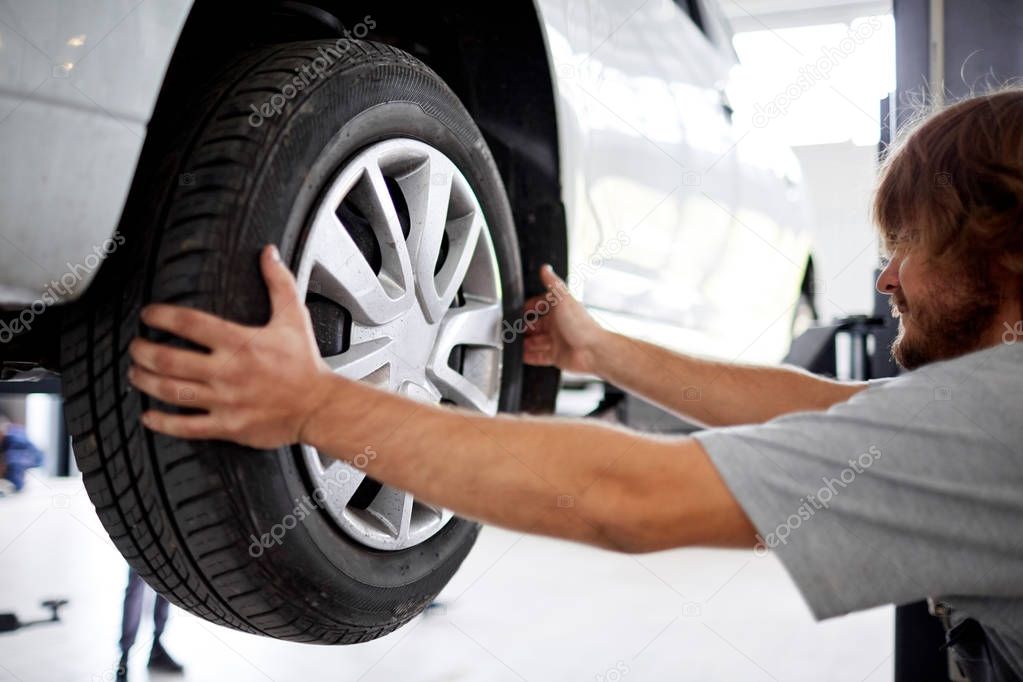 To do this, remove the tire from the disk and seal the puncture site with a special rubber gasket.
To do this, remove the tire from the disk and seal the puncture site with a special rubber gasket.
Another common cause of a flat tire is a cut on the side or tread of the wheel. Side cut occurs when in contact with a curb, metal fittings and other sharp protrusions.
If the tire carcass is intact, the tire will not deflate and the repair can be delayed until you arrive at your destination or a tire shop. But a deep cut can lead to a complete deflation of the tire.
Rubber with long cuts affecting the cord (carcass) is replaced with a new one and cannot be restored for safety reasons.
If no punctures or cuts are found during the initial inspection, then another cause of leakage must be sought. One of them may be a defective nipple.
The duty of the nipple (spool) is to keep the pressure in the wheel. If it is faulty, then the pressure in the tire begins to decrease. How to check what exactly poisons the spool? The method is quite simple: just wet your finger and bring it to the hole, if bubbles appear, the reason is found and the spool needs to be replaced.![]()
The second reason is that the nipple is not screwed in properly. To tighten it, a special key or a cap with a slot on the outer surface will do.
The valve on a tubeless tyre, the nipple, can also cause air to come out of the wheel. Outwardly, it may look good, but if it does not fit well on the disc, then the pressure will certainly drop.
The fitting can bleed air if the rubber is worn or when the air temperature drops. Its size decreases a little, but this is enough for the pressure to drop.
The most common causes of air etching through the disc are two:
If the disc is new, but when installing it, the master poorly smeared it with mastic, then after a while air etching may begin. And if the disk is old and the metal is worn out, then even the mastic will not help, because the tightness of the structure deteriorates due to the deformation of the metal.
Steel wheels are easier and cheaper to repair than cast wheels. To repair a steel disk, special rolling equipment is used. But after the repair of the cast disk, microcracks still remain, which affect its strength. Therefore, in case of serious damage, it is safer to replace the disk with a new one.
If the wheel is etching on the rim due to corrosion, then you need to clean the wheel from rust and paint, and then coat with sealant for better tightness.
When examining the rubber, a crack can be found. This is indicative of tire wear. But can these tires be used? Each tire is designed for a certain speed, but if it is damaged, the tire can burst from a sudden pressure drop. Usually cracks appear on the side of the wheel, even with a well-preserved tread. If the crack size does not exceed 0.01 mm, then it does not pose a danger. Deeper damage, felt with fingers, can even lead to an explosion of the cylinder. Cracks in the tread are less dangerous because the rubber is thicker there.
Another cause of tire cracking and delamination can be improper seasonal tire storage. The best storage location is a dark, cool place with low humidity. Wheels can be damaged by dirt, heat, humidity, and sunlight. Before laying in storage, the wheels must be washed, dried and treated with a special compound. It is better to put tires with disks vertically, and without disks - in a pile.
The best places to store tires:
Metal garages, attics and sheds are not suitable places for storage. Under unsuitable conditions, the structure of the rubber is damaged, which shortens the life of the wheels.
Rubber reacts to temperature changes. Therefore, from time to time it is necessary to pump up tires due to reduced pressure. Tire pressure may be lower in the morning in frost, and higher in the afternoon in thaw. Also, when the car is moving, the tires heat up and the pressure increases.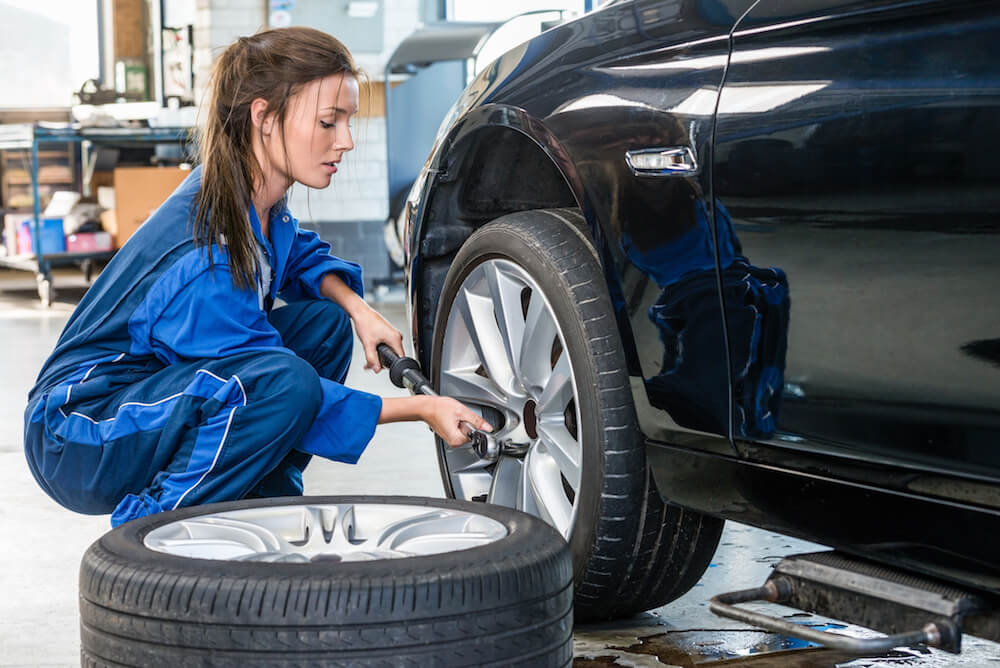
A few things that will save you from unexpected tire troubles and the need to urgently seek a tire service:
Why does the tire go flat?
call me
service appointment
test drive
The site is not a public offer.